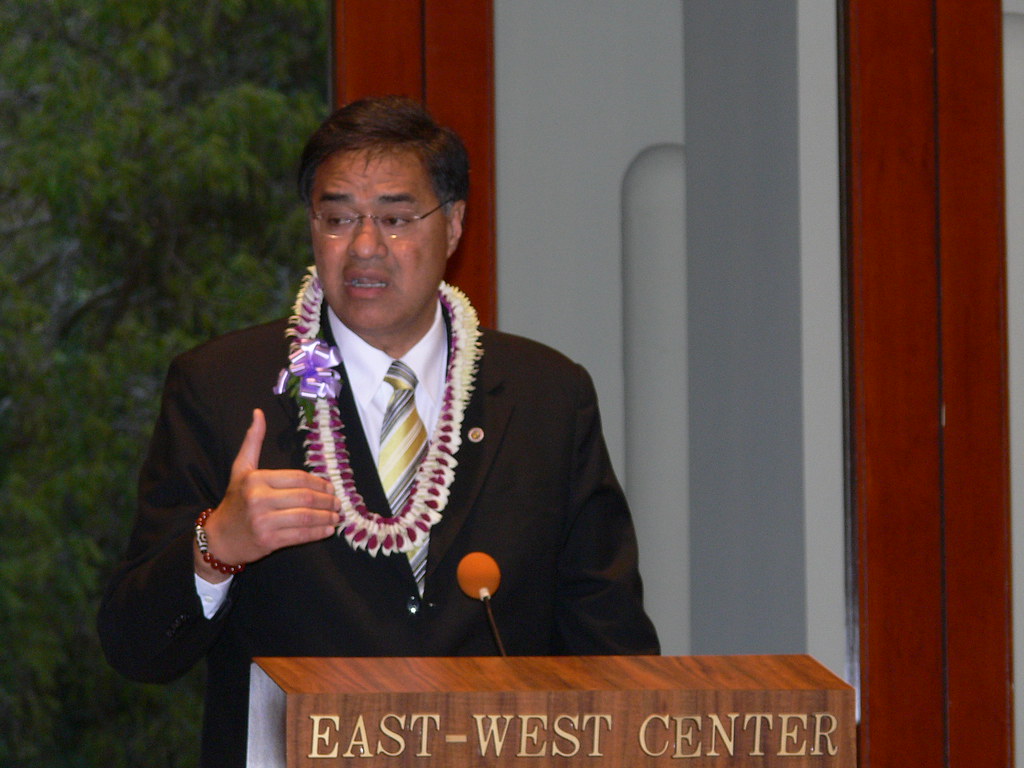Typically the primary election in Hawai‘i is something of a sleeper event. Unless there is a marquee race or something on the ballot that people get excited about, the primary typically happens and, in the end, a general yawn is emitted from the electorate.
But this time around, for this one (and I suspect those going into the future) this primary election cycle had a variety of exciting races to vote on. From choosing who was the top two candidates for mayor of both the City and County of Honolulu and the County of Hawai ‘i, to certain local races, there was a lot to pay attention to.

PC: “IMG_0130” by ahmebah is licensed under CC BY-NC-SA 2.0
Add to that the question of whether all mail-in voting really would work in Hawai‘i (it did), and the way the results came out (over 80% of the vote was read off in the first readout before 8 p.m.) and one finds that this primary election is one to remember.
With that, some (maybe spicy) highlights from my analysis of the results.
IN THE CATEGORY OF “okay we interviewed everyone, and we want to give these two a second interview”, both mayoral races on Hawai‘i Island and O‘ahu are going to the general.
The voters in the primary had a variety of choices. From new faces (Amemiya, Blangiardi) to old political stalwarts (Hannemann, Hanabusa). For Hawai‘i island, the new faces were Marzo and Roth, with current Mayor Harry Kim making up the “old stalwart”.
In the end, it was the “fresh faces” that made the top two and got chosen to move onto the general. Blangiardi and Amemiya for Honolulu; Marzo and Roth for Hawai‘i.
As for a breakdown of why that happened, you have to take a look at a poll taken by Civil Beat to figure this out. Overall, in that poll, voters surveyed said that it was a “fresh approach” they were looking for when it came to the election. In what has become two critical ethnic voting blocks – Caucasian and Japanese – both indicated that they wanted new blood in city hall.

PC: “10 Cities Rising” by East-West Center is licensed under CC BY-NC-ND 2.0
IN THE CATEGORY OF “We appreciate your years of service, but we have chosen to go another direction” some political veterans were told to not expect to get the job, or to gather their stuff and leave.
This started in the Mayor’s race, where veterans Colleen Hanabusa, Mufi Hannemann, and Kim Pyne were all “third place and down” in that race. For Hawai‘i County Mayor, incumbent Harry Kim also came in third, and he will be replaced in the coming year.
In lower races, two long time legislators, Romy Cachola of Kalihi and Tom Brower of Waikīkī, were also defeated by new challenges. Both Ernesto Ganden (Kalihi) and Adrian Tam (Waikīkī) will go to the general as both districts also have a Republican challenger.
It will be interesting to see how the Republican challengers, going up against these two new Democratic candidates, will fare. Those might be races to pay attention to.
IN THE CATEGORY OF “Okay, you can keep your job, but watch it”, at least two long time legislators beat back vigorous challengers. In House District 26 for the Democratic nomination, House Speaker Scott Saiki beat out Kim Coco Iwamoto by less than 200 votes, out of over 6,600 votes cast. Iwamoto, who was backed by progressive democratic entities led by political gadfly Gary Hooser, was on the verge of “AOC-ing” Saiki. (AOC-ing is about Alexandria Ocasio-Cortez’s surprising win over then-Representative Joe Crawley in 2018 through unified grassroots work in the district).

PC: “File:GreenNewDeal Presser 020719 (33 of 85) (cropped).jpg” by Senate Democrats is licensed under CC BY 2.0
In the other race to take out a veteran, Lynn DeCoite eked out a win over Walter Ritte by only 91 votes, to represent the island of Moloka‘i in the Legislature. The total votes cast in that contest was a little less than 6,400.
With these two races, Gary Hooser’s, and his group HAPA, their standing as a legitimate political organization took a few steps up. It will be interesting if he can parlay this support into higher numbers in the next election cycle. One of HAPA’s challenges is going to be how they intend to put forward a progressive agenda while the state will still be scratching for money post-COVID-19.
IN THE CATEGORY OF “When none of the above is a choice”. Several shoo-in candidates, because they were the only candidate on the ballot for that party, also drew a lot of “blank votes”. Blank votes mean that the voter didn’t choose any candidate for that office. In political circles, the higher the blank vote is, especially if you’re the only one running for that seat, the higher it may be that they are not as loved as they thought they were.
And there were a few that were in that category. Notable candidates that had high “blank votes” include State Representative and Vice Speaker of the House, Mark Nakashima (47%), State Representative and Majority Leader of the House Della Au Belatti (35%). In the Senate, Senator Stanley Chang saw 30% of his ballots blank. And Senator Donna Mercado Kim had 28% of her ballots, blank.
To be completely fair, most Republican candidates had just as high, with contested races generally showing fewer blank votes than non-contested races.
FINALLY, IN THE CATEGORY OF “Man, glad that worked”, preliminary kudos goes to both the county election offices and the state elections office. Not only did they run the first all mail-in ballot program in Hawai‘i’s history, but it also turns out they ran one of the most drama-free elections in a long time.
No one quite knew how all mail-in would work in Hawai‘i. While the signs were there that the voters were ready for it, the myriad of questions of whether this was going to be fair and properly run competed with the question of whether the Hawai‘i voter would even participate.
In the end, records on participation were shattered, with 51% of total registered voters casting a ballot in this primary. And if things hold where improprieties are few or non-existent (thus the “preliminary”), then it might turn out that the choice to go all mail-in was a good one for voter participation in Hawai‘i.
